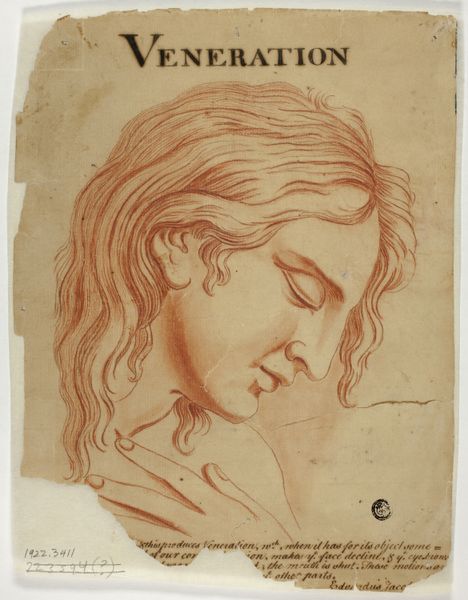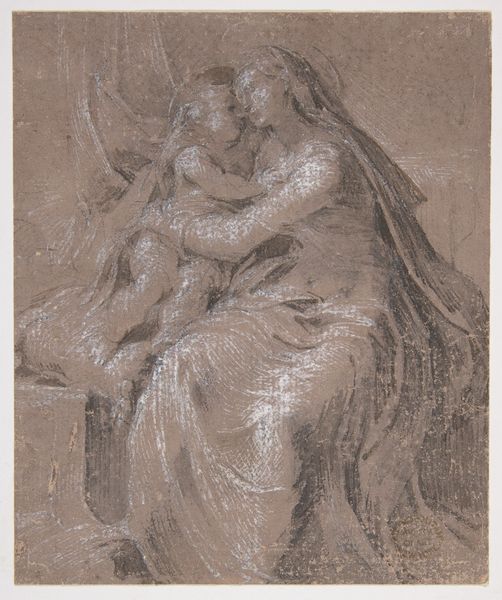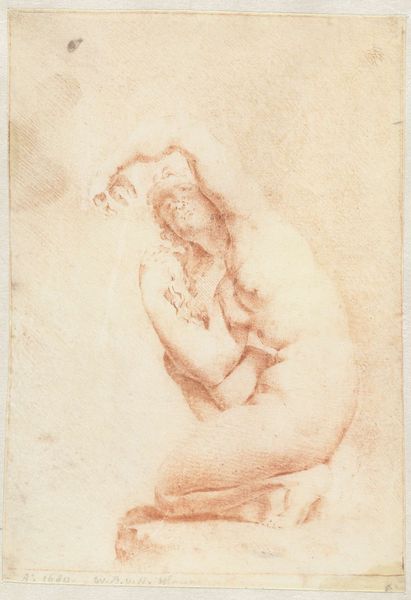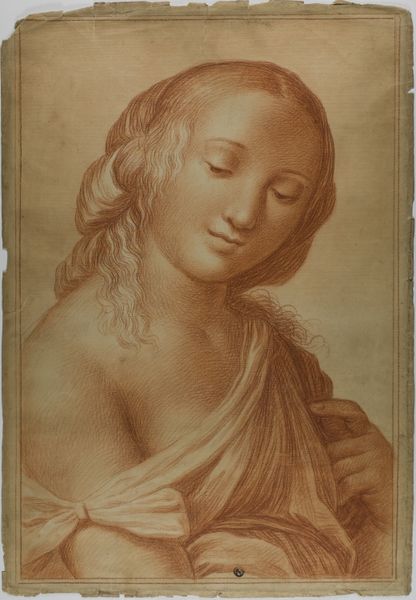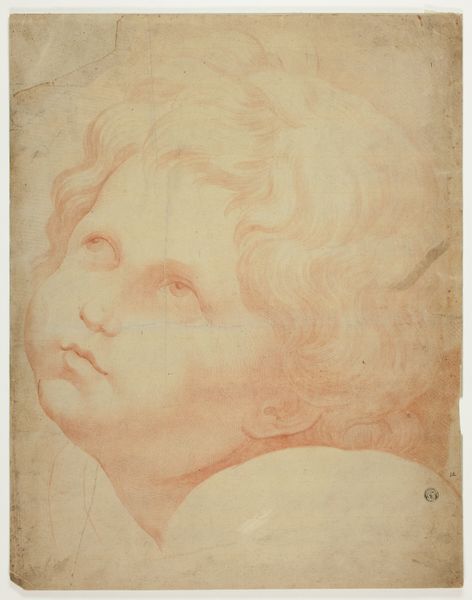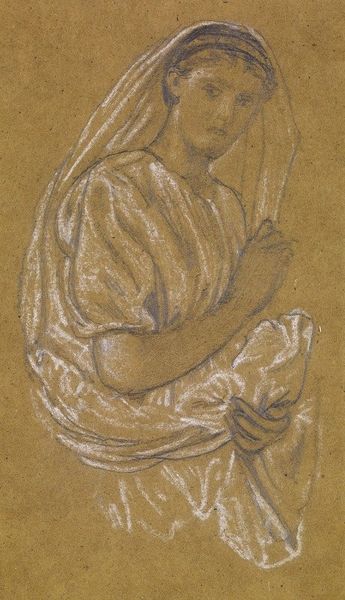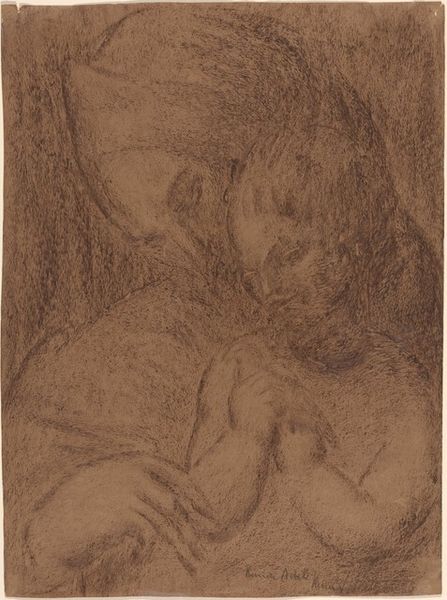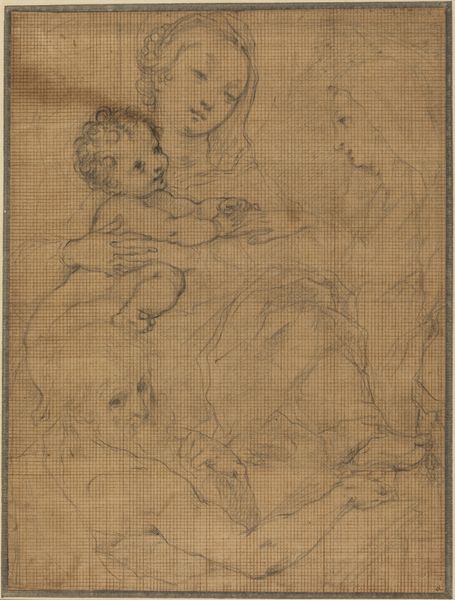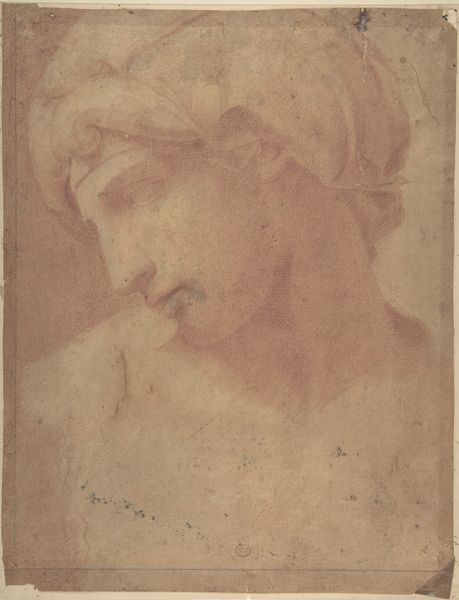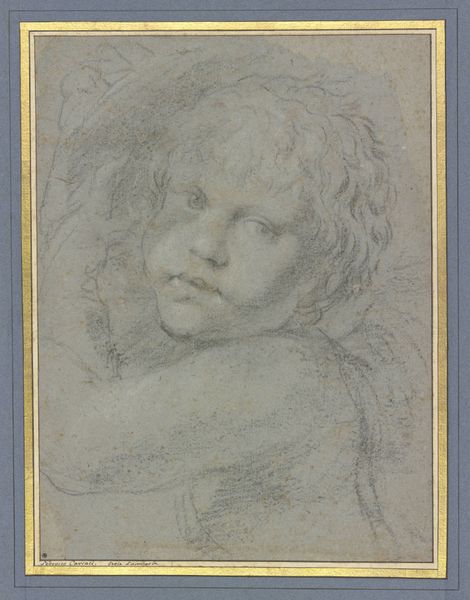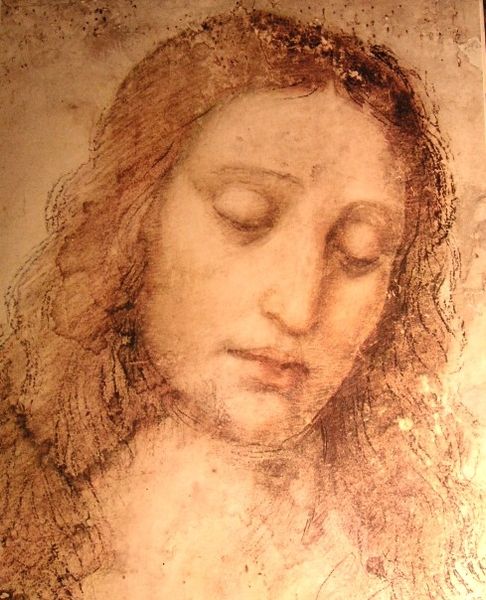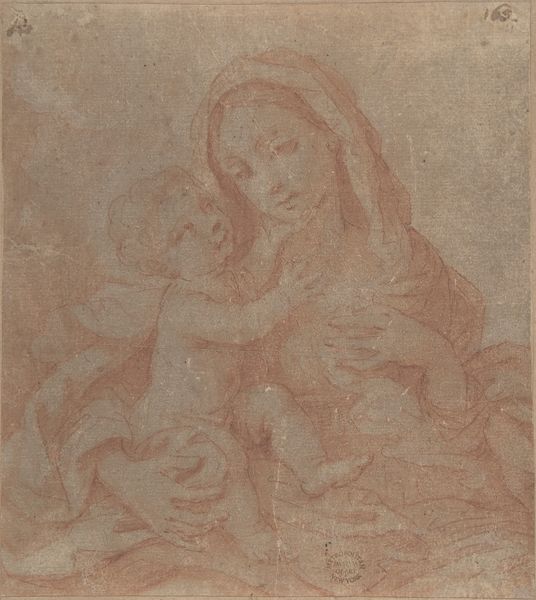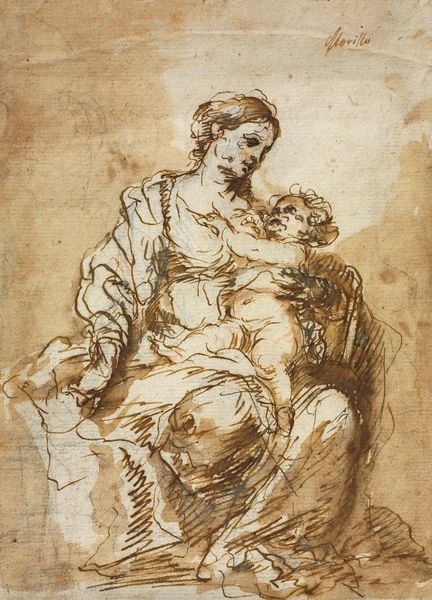
Head of a Youth Wearing a Cap; a Right Forearm with the Hand Clutching a Stone; and a Left Hand Holding a Drapery 1480 - 1485
0:00
0:00
drawing, pencil, charcoal
#
portrait
#
drawing
#
charcoal drawing
#
figuration
#
11_renaissance
#
pencil
#
portrait drawing
#
charcoal
#
italian-renaissance
Copyright: Public Domain: Artvee
Curator: This artwork, thought to be from around 1480 to 1485, is a drawing attributed to Sandro Botticelli, entitled "Head of a Youth Wearing a Cap; a Right Forearm with the Hand Clutching a Stone; and a Left Hand Holding a Drapery." It appears to be rendered in charcoal and pencil. Editor: Immediately, I'm struck by a sense of subdued melancholy. The figure’s downcast gaze and the muted tones create this overall feeling of introspection, even perhaps resignation. Curator: Yes, that downturned gaze is powerful. Think of the Renaissance ideal of humanism and this image can be seen to capture humanity in the context of that era: the emerging self-awareness depicted not only in the delicate rendering of the figure's face and expression, but also his engagement with the tactile world, stone, drapery. What cultural echoes do you observe? Editor: The stone. A recurring symbol through various social movements: Stonewall, stones thrown in protest. But the context, as you said, changes the meaning entirely, doesn't it? In Botticelli's time, this may speak to something like personal power. What did it mean to clutch a stone so intimately? Was it power? Resistance? Or something more deeply symbolic of the burdens that weigh heavily on young people of that era? Curator: Those burdens would certainly be both material and spiritual. Remember that in Renaissance iconography, a stone might have represented faith. In many ancient myths, stones have been closely linked to concepts of endurance, resilience, and even transformation. Think of alchemy, think of building, the symbolic weight of a foundation. But look at how the drapery softens the overall impression of raw force. Editor: True. It's a fascinating contrast. This isn't just a celebration of youthful strength. I see this interplay of rough and delicate elements as a portrait that explores that push-pull we experience, our attempt to soften the blows and burdens of our history and material existence through art and culture, like theater or literature, maybe even a love affair? How do we build ourselves up with stone and shield ourselves in velvet? Curator: Exactly. What starts as a study of form, becomes a testament to inner life and the artistic practice itself. I come away seeing an exploration of complex feelings through simple, powerful symbols that echo across cultures and ages. Editor: And for me, the enduring questions surrounding power and vulnerability linger. How do we harness, conceal, and question our strengths and fragility? That image stays with you long after you leave.
Comments
No comments
Be the first to comment and join the conversation on the ultimate creative platform.
